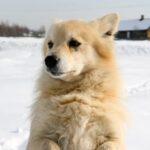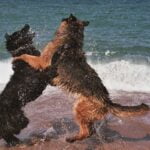Are you interested in learning how to train waterfowl hunting dogs? Training these specialized hunting dogs requires patience, skill, and knowledge of their unique characteristics and temperament. In this article, we will delve into the world of waterfowl hunting dogs, providing you with a comprehensive guide on how to train them effectively. From understanding the breed to advanced training techniques, we will cover it all.
Waterfowl hunting dogs are highly skilled and versatile breeds that excel in retrieving game from water. With their keen sense of smell and strong instincts, they are valuable assets for hunters. However, training them requires a deep understanding of their unique needs and behaviors. In this article, we will explore the characteristics and temperament of waterfowl hunting dogs, providing you with insights that will help you build a strong foundation for training.
Once you have a solid understanding of the breed, we will move on to the basics of training waterfowl hunting dogs. From obedience training to developing crucial skills for hunting situations, building a solid foundation is essential for any successful training program.
We will provide you with practical tips and techniques to get started on the right foot. Whether you’re a seasoned trainer or new to working with waterfowl hunting dogs, this article will offer valuable guidance on how to train these remarkable animals effectively.
Understanding the Breed
Waterfowl hunting dogs are a special breed of canine that are specifically trained to assist hunters in retrieving waterfowl, such as ducks and geese, that have been shot by the hunter. These dogs have been bred for their exceptional swimming abilities, strong work ethic, and high intelligence. They are typically very energetic and need an outlet for their energy, making them excellent companions for avid hunters.
One of the most popular breeds of waterfowl hunting dogs is the Labrador Retriever. Labs are known for their friendly and outgoing nature, which makes them wonderful family pets as well as great hunting companions. Other popular breeds include the Chesapeake Bay Retriever, the Golden Retriever, and the Boykin Spaniel.
It is important to understand the characteristics and temperament of waterfowl hunting dogs in order to effectively train them for their specific purpose. These dogs are known for being highly trainable, eager to please, and extremely loyal to their owners. However, they also require firm but gentle guidance and consistent training in order to bring out their full potential as skilled hunting partners.
| Characteristics | Temperament |
|---|---|
| Highly Trainable | Eager to Please |
| Loyalty | Firm but Gentle Guidance Required |
| Strong Work Ethic | Energetic & Outgoing |
Building the Foundation
Basic training for waterfowl hunting dogs is essential in establishing a strong foundation for more advanced techniques. This stage of training focuses on obedience, socialization, and building a solid working relationship between the dog and the handler.
Obedience Training
Obedience training is the cornerstone of basic training for waterfowl hunting dogs. Teaching commands such as sit, stay, come, and heel are crucial for effective communication in the field. Consistent practice and positive reinforcement are key to instilling these commands in the dog’s behavior.
Socialization
Socialization is another important aspect of laying a solid foundation for waterfowl hunting dogs. Exposing the dog to various environments, people, and other animals helps them become well-adjusted and confident in different settings. Socialization also reduces the likelihood of fear-based behaviors or aggression towards unfamiliar stimuli during hunting expeditions.
Building a Working Relationship
Establishing a strong bond between the handler and the waterfowl hunting dog is vital for successful training. This involves spending quality time with the dog, engaging in activities that promote trust and cooperation, and understanding their unique personality traits. Building a working relationship based on trust and respect lays the groundwork for more advanced training techniques down the line.
By focusing on these foundational elements of basic training, handlers can set their waterfowl hunting dogs up for success in more specialized and advanced training programs designed to enhance their skills in the field.
Specialized Training Techniques for Waterfowl Hunting Dogs
Retrieving Training
One of the most important specialized training techniques for waterfowl hunting dogs is retrieving training. This includes building up the dog’s natural instinct to retrieve and bringing back downed birds to the hunter. Retrieving training involves teaching your dog to follow hand signals, verbal cues, and whistle commands to retrieve game from water or land.
Scent Training
Scent training is another essential specialized technique for waterfowl hunting dogs. Teaching your dog to track and locate waterfowl based on scent is crucial for a successful hunt. This training involves introducing your dog to different scents associated with waterfowl and teaching them how to follow those scents to locate game in various environments.
Gunfire Training
A specialized training technique that cannot be overlooked is gunfire training. Waterfowl hunting often involves shooting firearms, so it is essential that your dog is comfortable with loud noises and can remain focused on the task at hand despite the distraction of gunfire. Gunfire training involves desensitizing your dog to loud noises gradually and positively associating gunfire with rewards and positive experiences.
These specialized training techniques are crucial in preparing a waterfowl hunting dog for a successful and safe hunting experience. Each technique requires patience, consistency, and positive reinforcement in order to effectively train your dog for the unique challenges of waterfowl hunting.
Tools of the Trade
When it comes to training waterfowl hunting dogs, having the right gear is essential for ensuring a successful and effective training program. The following are some essential tools of the trade that every waterfowl hunting dog trainer should have:
- Training dummies: Having a variety of training dummies is crucial for teaching your waterfowl hunting dog how to retrieve birds. Floating dummies are especially useful for simulating real-life hunting scenarios on the water.
- Whistles and duck calls: Using whistles and duck calls during training can help you communicate with your dog and teach them important commands. A whistle can be used for recall, while a duck call can be used to simulate the sound of a flying bird, teaching your dog when to pay attention and get ready to retrieve.
- Waders or boats: Depending on the type of waterfowl hunting you plan on doing, having waders or a boat can be essential for training your dog in water retrieval. This gear will allow you to train your dog in various water conditions, preparing them for real-life hunting situations.
In addition to these items, having the right leashes, collars, and vests for your waterfowl hunting dog is also important for their safety and success during training. Investing in quality gear will not only ensure the effectiveness of your training but also help build a stronger bond between you and your furry companion as you work together towards the common goal of successful waterfowl hunting.
Managing Health and Nutrition for Waterfowl Hunting Dogs in Training
Waterfowl hunting dogs are not only hardworking and agile, but they also need to be in top physical condition to perform their tasks effectively. Managing the health and nutrition of your waterfowl hunting dog is essential in ensuring that they can keep up with the demands of training and hunting. Here are some important tips for keeping your dog healthy and well-nourished during training:
- Regular Exercise: Just like humans, dogs need regular exercise to stay fit and healthy. Incorporate daily walks, runs, or playtime into your dog’s routine to maintain their physical fitness.
- Proper Nutrition: Providing your waterfowl hunting dog with a balanced diet is crucial for their overall health. Choose high-quality dog food that is specially formulated for active breeds, and consider supplementing their diet with vitamins or minerals as needed.
- Hydration: Waterfowl hunting dogs expend a lot of energy during training, so it’s important to keep them well-hydrated at all times. Make sure they have access to clean water throughout the day, especially during hot weather or intense workouts.
In addition to these general guidelines, it’s important to monitor your dog’s health closely during training. Be on the lookout for any signs of injury or illness, such as limping, excessive panting, or changes in appetite. Regular veterinary check-ups can also help ensure that your waterfowl hunting dog remains in peak physical condition.
Lastly, proper rest is just as important as exercise and nutrition for maintaining your waterfowl hunting dog’s health during training. Allow your dog adequate time to rest and recover after intense training sessions, and provide a comfortable sleeping area where they can relax and recharge for the next day’s activities. With proper management of health and nutrition, you can keep your waterfowl hunting dog in top shape for successful training sessions and rewarding hunts.
Field Training
One essential element of field training is introducing waterfowl hunting dogs to bodies of water. This can include ponds, rivers, or lakes. The dogs need to become comfortable swimming and navigating through different types of water bodies to retrieve downed birds during actual hunts. Training sessions should focus on building their confidence and ability to locate underwater prey while staying focused on their handler’s commands.
In addition to water training, field scenarios should also include exercises that mimic the terrain typically encountered during waterfowl hunting expeditions. This can involve running through marshes, navigating dense vegetation, or crossing uneven ground. By exposing the dogs to these environments in a controlled setting, trainers can help them develop the agility and endurance needed for successful hunts in real-life situations.
| Training Technique | Description |
|---|---|
| Water Introduction | Introduce dogs to bodies of water for swimming and retrieving practice. |
| Terrain Simulation | Set up scenarios that mimic hunting terrains such as marshes and dense vegetation. |
Troubleshooting Common Training Challenges
Training a waterfowl hunting dog can be a rewarding experience, but it comes with its fair share of challenges. From stubborn behavior to distractions in the field, there are common issues that may arise during the training process.
One of the most common challenges is getting your dog to consistently obey commands, especially in high-energy and stimulating environments like a hunting scenario. In these cases, it’s important to go back to basics and reinforce obedience training in different environments to ensure your dog understands and follows commands regardless of the situation.
Another challenge that many waterfowl hunting dog owners face is overcoming distractions while out in the field. Birds, other animals, or even other dogs can easily divert your dog’s attention away from the task at hand.
To address this challenge, it’s crucial to gradually expose your dog to distractions during training sessions and teach them how to remain focused on their task despite potential diversions. Utilizing tools such as decoys or scent trails can also help simulate realistic hunting scenarios while minimizing distractions.
Lastly, some waterfowl hunting dogs may exhibit fear or hesitation when faced with certain obstacles or tasks during training. It’s essential for owners to be patient and understanding while gradually introducing their dog to new experiences and challenges. By using positive reinforcement techniques and building trust through consistent training, these common fears or hesitations can be overcome over time.
Overall, troubleshooting common training challenges with waterfowl hunting dogs requires patience, consistency, and a deep understanding of your dog’s individual needs and behaviors. By addressing these challenges head-on and tailoring your approach to your specific dog’s temperament and abilities, you can build a strong foundation for successful waterfowl hunting training.
Advanced Training
Once your waterfowl hunting dog has mastered the basics of obedience and retrieving, it’s time to take their training to the next level. Advanced training for waterfowl hunting dogs involves honing their hunting skills, improving their endurance, and ensuring they can handle complex hunting scenarios in various environments.
One key aspect of advanced training is teaching your waterfowl hunting dog to work with decoys and blinds. Introduce your dog to different types of decoys and teach them how to navigate around them without disturbing their placement. Additionally, familiarize your dog with different types of blinds and train them to remain calm and focused while concealed in a blind. This advanced skill will be crucial when you are out in the field on a real hunt.
Another important aspect of advanced training is simulating realistic hunting scenarios for your waterfowl hunting dog. This could involve incorporating elements such as water crossings, obstacles, varied terrain, and simulated bird launches into your training sessions. By exposing your dog to these realistic scenarios during training, you can better prepare them for the challenges they may encounter during actual hunts.
As you advance your waterfowl hunting dog’s training, consider enlisting the help of professional trainers who specialize in working with hunting dogs. These professionals can provide valuable guidance on refining your dog’s skills and addressing any specific challenges or limitations they may have. With dedication and continued practice, you can take your waterfowl hunting dog’s abilities to new heights and create an even stronger bond through the shared experience of rigorous training.
Conclusion
In conclusion, training a waterfowl hunting dog is not just about developing their skills for the hunt, but also about building a strong bond and partnership with your canine companion. The training process allows for you to understand, communicate, and work together with your dog in a unique way that strengthens your relationship. It’s not just about obedience and performance, but also about trust, loyalty, and mutual understanding.
When you invest time and effort into training your waterfowl hunting dog, you are not only shaping them into a skilled hunter, but also creating a well-behaved and reliable companion both in the field and at home. The bond that is formed through training will carry over to all aspects of your relationship, making it more fulfilling for both you and your dog.
Ultimately, the journey of training a waterfowl hunting dog is as rewarding as it is challenging. Whether it’s through basic obedience or advanced field training, the process allows for an incredible connection to be established between you and your loyal hunting partner. Through patience, consistency, and unwavering dedication to their development, you can create a lasting bond that goes beyond the hunt – one built on trust, communication, and shared experiences in the great outdoors.
Frequently Asked Questions
How Do I Train My Dog to Be a Duck Hunting Dog?
Training a dog to be a duck hunting dog requires patience, consistency, and specific skills. First, the dog needs to be comfortable around water, as duck hunting often involves water retrieves. Basic obedience training is crucial, including commands like sit, stay, and come.
The dog should also be exposed to gunfire and learn how to remain calm during shooting. Introducing the dog to decoys and other hunting equipment will help them understand their role in duck hunting.
How Long Does It Take to Train a Bird Hunting Dog?
The time it takes to train a bird hunting dog can vary depending on the breed, the individual dog’s temperament, and the consistency of training. Some dogs may take several months to reach a proficient level of bird hunting skills, while others may take longer.
It’s important not to rush the training process and instead focus on solidifying each skill before moving on to the next.
What Makes a Good Duck Hunting Dog?
A good duck hunting dog possesses certain qualities that make them well-suited for this type of work. They should have a strong desire to retrieve objects and be comfortable swimming in various water conditions. The ideal duck hunting dog is obedient, able to follow commands even in distracting environments such as a marsh or wetland area.
Additionally, they should be alert and have good stamina for long days out in the field. Lastly, having a nose for tracking is also an important quality in a duck hunting dog.

Welcome to the blog! I am a professional dog trainer and have been working with dogs for many years. In this blog, I will be discussing various topics related to dog training, including tips, tricks, and advice. I hope you find this information helpful and informative. Thanks for reading!





